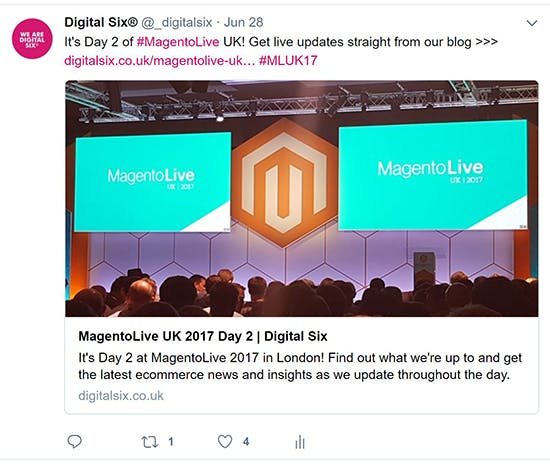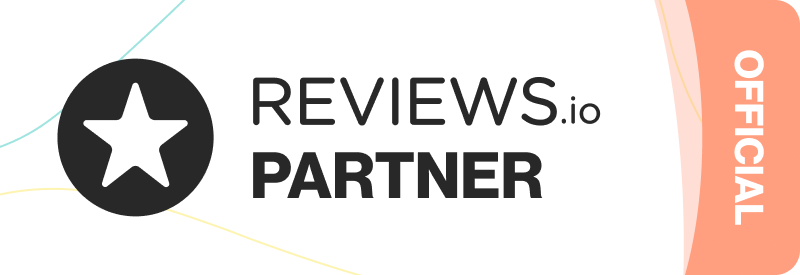Live Blogging Case Study & Top Tips

Last month, a few of our team members headed down to London to attend MagentoLive UK. This involved two days filled with talks from Magento, highlighting the new features being rolled out on the Magento 2 platform. Usually at these events we would let our audience know the key take-aways by tweeting, however this time we wanted to do something different! We decided to run a live blog, updated with timestamps throughout the event. This would involve a lot of planning and participation from different team members but it would also give our audience much more detail and context to the information being shared.
Planning & Setting Up
As live blogging was something we had never done before, we needed to make a plan that would help it go as smoothly as possible. First, we decided that I would blog from our office in Edinburgh by adding the updates written by all four attendees. The most efficient way for me to get these updates was through a shared Google Spreadsheet. This meant I could see updates appear instantly with the spreadsheet open, and the attendees could add updates quickly and easily during the talks.
The spreadsheet contained the schedule of talks with all necessary details such as the topic covered, the guest speakers and which member of our team that would be attending each. This not only helped the attendees keep on track, but it also meant I knew who to communicate with if I had a question about any of the updates. We planned for the attendees to submit a few updates for each session they went to.
Next, we set up the blog post on our website. Preparing the blog post in advance meant there was no rush on the day, and we could preview the layout and formatting of the article to make sure it was what we wanted.
We also scheduled posts for all our social media channels using Hootsuite, which allowed us to focus on the article updates rather than manually sharing on social media. The use of “official” hashtags was also key for making sure our content would be seen by those interested in the event itself, as well as “unoffical” but related hashtags to make sure our content would be seen by those with an interest in the “theme” but not necessarily aware of the event.

How It Worked
Once the team arrived at the event, we got straight to work! The attendees went to their first sessions of the day and began adding updates in the Google Spreadsheet. With the first flurry of updates, the first teething problems appeared – I realised that I didn’t know what time each update was being entered. Luckily Claire and I were on chat, so once the first session was over, she asked the team to add a timestamp for each update to make sure updates actually made sense!
Throughout the sessions, I proofed and added the most recent update with the relevant timestamp and session name, with the latest update appearing first on the published article.
The team also emailed me photos to help add extra interest to the blog. They made sure that each email included the session name and a caption for the photo. Whenever I downloaded an image, I would resize it using Photoshop, keeping the dimensions consistent and the image file optimised to ensure quick loading on any device.
Overall, the live blogging was a success! Through promoting it on various social media channels, we attracted a high number of people to our blog. Our Google Analytics reports also indicated that many of these readers were new to our site. Not only that, once they had viewed our blog post, they went on to view another page of our website rather than immediately exiting. These insights prove that live blogging was well worth the effort. Our audience found it engaging, and it helped increase awareness of our brand.
Our Top Tips For Live Blogging
- Set up everything in advance, including the article and a few social media posts. Hootsuite is a great platform for scheduling social media posts as you can post the same message to multiple platforms
- Find out what the event’s official hashtag is and include it in every social media post. This should help increase visibility, and people searching the hashtag may be interested in viewing your blog. Your post might even get retweeted!
- Updates only need to be one or two sentences long, sometimes including a few bullet points. This keeps them consistent and allows them to be added quickly. Speediness and efficiency are key to live blogging!
- Whoever is in charge of adding updates to the blog should check for typos. It’s easy to make spelling mistakes when you’re multi-tasking and trying to write quickly
- Include interesting images taken at the event. This helps break up the long feed of updates and keeps the content interesting






